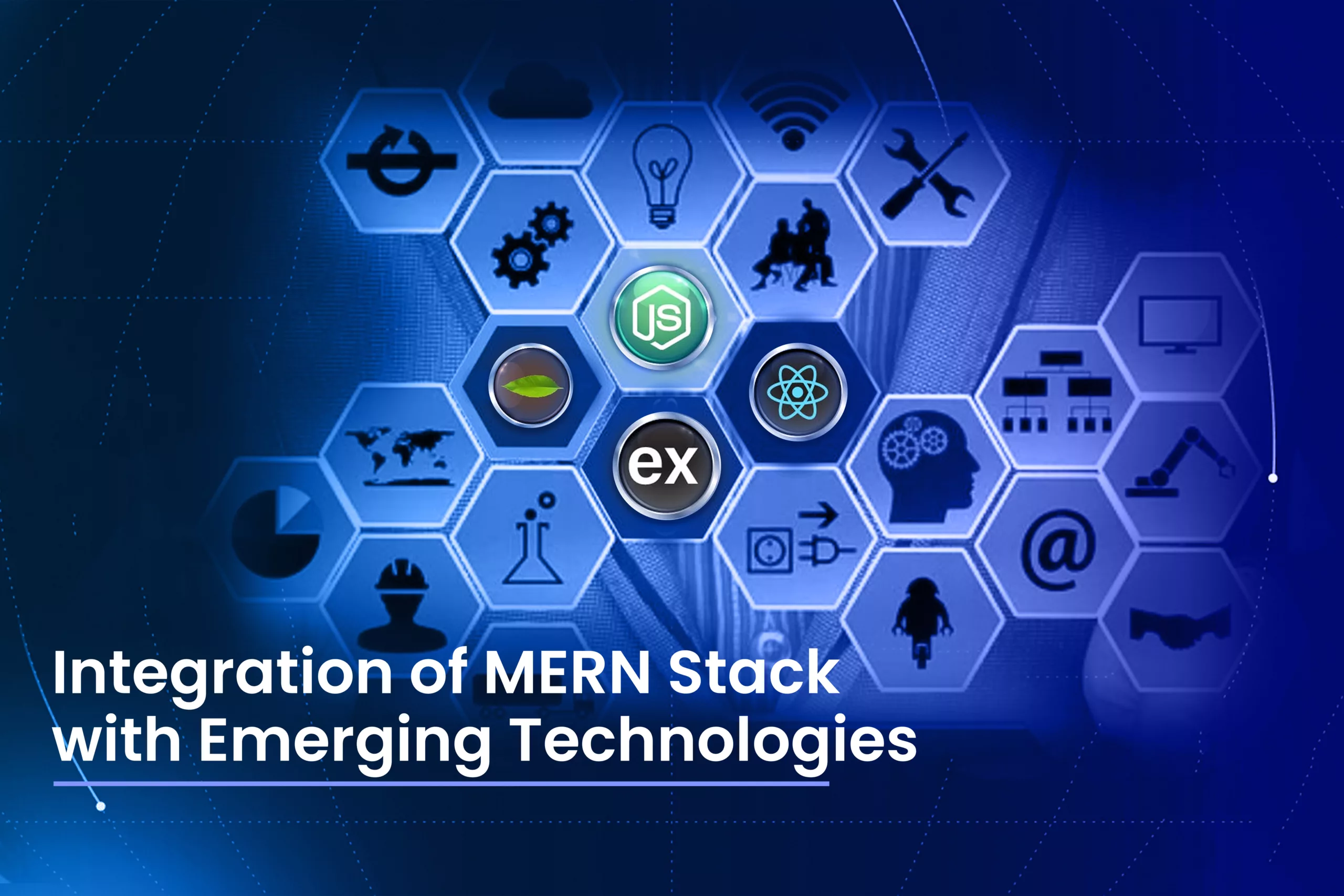Teamwork and collaboration stand as the pillars of a company’s success, with a resounding 75% of staff emphasizing their crucial role. Nowhere is this synergy more vital than in building a high-performing Java development team. Java, a linchpin in digital innovation, thrives when nurtured by a team that not only excels technically but also collaboratively.
This guide unveils a step-by-step journey to forge such a team. From defining project goals and roles to fostering collaboration and managing conflicts, we will equip you with insights to unlock your Java development team’s full potential.
Read until the end to discover how to propel your Java projects to new heights.
Define Project Goals and Requirements

Establish clear project goals and requirements. This phase lays the groundwork for the entire development process. It guides your team toward a successful outcome. Without a well-defined project scope and objectives, your team may struggle with direction, potentially leading to delays and decreased overall efficiency.
The Significance of Clarity
Before diving into the technicalities of assembling your team, gain a crystal-clear understanding of what your project aims to achieve. This clarity serves several critical purposes:
- Alignment: It ensures that all your Java development team members are on the same page regarding the project’s purpose and objectives. This alignment fosters a sense of shared purpose and minimizes confusion.
- Efficient Resource Allocation: With well-defined goals and requirements, you can allocate resources—both human and technical—more efficiently. This helps prevent your resource wastage and maximizes productivity.
- Risk Mitigation: A comprehensive project definition allows you to identify potential risks and challenges upfront. So, you can proactively risk mitigation strategies, reducing the likelihood of project disruptions.
Creating a Clear Project Roadmap
To define your project goals and requirements effectively, consider the following steps:
- Stakeholder Consultation: Engage with key stakeholders, including clients, product owners, and end-users. Gather their input and expectations to ensure that your project aligns with their needs.
- Document Objectives: Clearly articulate your project’s objectives and goals. What problem is the project solving? What value will it deliver? What are the success criteria?
- Scope Definition: Define the project scope by specifying what is included and, equally important, what is not. This helps prevent scope creep and ensures that everyone understands project boundaries.
- Functional Requirements: Detail the specific functionalities or features the software should have. These are often presented as user stories or use cases.
- Non-functional Requirements: Address non-functional aspects like performance, security, scalability, and usability. These are equally vital for a successful project.
- Timeline and Milestones: Establish your project timeline with clear milestones. This provides a structured framework for progress tracking.
- Budget and Resource Allocation: Determine the budget and allocate resources, including team members, tools, and technologies.
Iterative Approach
Project goals and requirements are not set in stone. As your project evolves and new information becomes available, revisit and adjust them. Embrace an iterative approach that allows for flexibility while maintaining focus on your project’s overarching goals.
By investing time and effort in defining your project goals and requirements, you pave the way for a smoother development process. This clarity empowers your Java development team to make informed decisions and stay on course to deliver a successful project.
Identify Key Roles and Responsibilities

Once you’ve established a clear understanding of your project’s goals and requirements, identify the key roles and responsibilities within your team. Each role plays a crucial part in the development process, and having the right people in these roles is essential for the project’s success.
Common Roles in a Java Development Team
Before diving into specific responsibilities, let’s explore some of the common roles you’ll find in a Java development team:
- Java Developer: These are the programmers responsible for writing, testing, and maintaining Java code. They are the backbone of your team, and their coding skills are paramount to your project’s success.
- Software Architect: Software architects are responsible for designing the overall structure and architecture of your software. They make high-level decisions about how different components of your system will interact.
- Quality Assurance (QA) Engineer: QA engineers focus on testing your software to ensure it meets quality standards. They identify and report bugs and work closely with developers to resolve issues.
- Project Manager: The project manager oversees your project’s planning, execution, and delivery. They are responsible for setting timelines, managing resources, and ensuring that your project stays on track.
- DevOps Engineer: DevOps engineers bridge the gap between development and operations. They focus on automating processes, continuous integration, and ensuring your software is deployable and maintainable.
Defining Responsibilities
For each role, it’s essential you define specific responsibilities and expectations:
- Java Developer Responsibilities: Java developers should write clean, maintainable code, adhere to coding standards, and collaborate effectively with other Java development team members. They are responsible for implementing your software features and fixing bugs.
- Software Architect Responsibilities: Software architects define your software’s overall structure, choose appropriate technologies, and ensure that your system is scalable and maintainable. They provide guidance to developers and align technical decisions with project goals.
- QA Engineer Responsibilities: QA engineers create test plans, perform manual and automated testing, and provide feedback to developers. They ensure that your software is free from defects and meets quality standards.
- Project Manager Responsibilities: Project managers set project goals, create schedules, allocate resources, and manage risks. They are responsible for communicating with stakeholders and ensuring that your project is delivered on time and within budget.
- DevOps Engineer Responsibilities: DevOps engineers automate development and deployment processes. They maintain CI/CD pipelines, monitor system performance, and ensure that your software can be deployed smoothly.
Tailoring Roles to Your Project
The specific roles and responsibilities within your Java development team vary depending on the size and complexity of your project. In smaller teams, individuals wear multiple hats, while larger projects require specialized roles.
Recruitment and Hiring

Hiring Java developers for your team is a critical step in building a high-performing team. The success of your project depends on the skills, experience, and dedication of your team members. Here’s a comprehensive guide to help you navigate the recruitment and hiring process effectively.
Define Your Ideal Candidate
Create a clear picture of your ideal candidate before you start the recruitment process. Consider factors such as:
- Technical Skills: Identify the specific Java-related skills and experience required for your project. Be specific about programming languages, frameworks, and tools.
- Soft Skills: Consider soft skills like problem-solving, teamwork, communication, and adaptability. These qualities are essential for a harmonious and productive team.
- Cultural Fit: Determine the cultural values and principles that your team upholds. Ensure that candidates align with your team’s culture and values.
- Experience Level: Decide whether you need junior, mid-level, or senior developers based on the project’s complexity and budget.
Crafting Effective Job Descriptions
A well-crafted job description is the first step in attracting the right candidates:
- Clear Title: Use a clear and concise job title that accurately reflects your role’s responsibilities.
- Detailed Responsibilities: Describe the key responsibilities and tasks the candidate will undertake. Use bullet points for clarity.
- Requirements: Clearly outline the technical skills, qualifications, and experience required. Distinguish between “must-haves” and “nice-to-haves.”
- Company Overview: Provide a brief overview of your company, its culture, and the project the candidate will be working on.
- Benefits and Perks: Highlight unique benefits or perks your company offers, like flexible working hours, remote work options, or professional development opportunities.
Sourcing Candidates
To hire Java development team, you can use multiple channels:
- Job Boards: Post your job openings on popular job boards like LinkedIn, Indeed, Glassdoor, and specialized tech job boards.
- Social Media: Utilize social media platforms like LinkedIn, Twitter, and Facebook to share job postings and connect with potential candidates.
- Networking: Tap into your professional network and ask for referrals from colleagues, friends, and industry connections.
- Recruitment Agencies: Consider partnering with recruitment agencies that specialize in IT and tech talent.
- University and Coding Bootcamps: Attend career fairs at universities and coding bootcamps to recruit fresh talent.
Screening and Interviewing
The screening and interview process is where you assess candidates’ technical skills, experience, and cultural fit:
- Resume Review: Carefully review resumes to shortlist candidates who meet your criteria.
- Technical Interviews: Conduct technical interviews to evaluate candidates’ programming skills. This can include coding exercises, algorithm challenges, or discussions about their previous projects.
- Behavioral Interviews: Assess soft skills and cultural fit through behavioral interviews. Ask about their problem-solving approach, teamwork, and experiences in previous roles.
Practical Tests and Coding Challenges
Consider assigning practical tests or coding challenges to candidates. These exercises can provide valuable insights into their problem-solving abilities, coding proficiency, and approach to real-world challenges.
Onboarding and Integration
Once you’ve selected the right candidates, focus on a smooth onboarding process. Provide them with the necessary resources, tools, and support to integrate into your team seamlessly.
Remember that recruitment and hiring are ongoing processes. Keep building a talent pipeline and continuously improve your recruitment strategies to ensure your Java development team remains strong and adaptable.
Team Collaboration and Communication

Effective collaboration and communication are the cornerstones of an onshore and offshore Java development team. Even with a group of highly skilled individuals, a lack of synergy and transparent communication can hinder productivity and project success. Here’s how you can foster a collaborative and communicative team environment:
Establish Clear Communication Channels
Set up clear and efficient communication channels within your team. This includes:
- Team Meetings: Hold regular team meetings, like daily stand-ups, to discuss progress, challenges, and goals. Keep these meetings concise and focused.
- Project Management Tools: Utilize project management tools like Jira, Trello, or Asana to track tasks and priorities. These tools facilitate transparency and accountability.
- Instant Messaging: Use tools like Slack or Microsoft Teams for quick and informal communication. These platforms will allow your Java development team to ask questions and share updates in real-time.
- Email: Reserve email for important announcements and formal communication. Avoid overloading inboxes with routine messages.
Define Communication Protocols
Establish communication protocols to ensure that everyone knows how and when to communicate. This includes guidelines for:
- Reporting Issues: Specify how team members should report issues or bugs. This might involve using a dedicated issue-tracking system or a specific format for bug reports.
- Code Reviews: Define a structured code review process to maintain code quality. Outline who should conduct reviews, how they should be conducted, and the expected turnaround time.
- Emergency Situations: Plan for emergency situations and provide clear instructions for contacting key team members outside of regular working hours.
Foster an Open and Inclusive Culture
Encourage team members to voice their opinions and ideas without fear of judgment. An open and inclusive culture promotes innovation and problem-solving. Consider these practices:
- Feedback Mechanisms: Establish mechanisms for providing and receiving feedback. Regular feedback sessions or anonymous suggestion boxes can be effective.
- Respectful Communication: Promote respectful and constructive communication. Address conflicts promptly and professionally to maintain a positive team atmosphere.
- Diverse Perspectives: Embrace diversity within your team. Different perspectives and experiences can lead to more creative solutions and better problem-solving.
Collaboration Tools and Practices
Use collaboration tools and practices to enhance your Java development team work:
- Version Control: Employ version control systems like Git to track changes in code collaboratively. Ensure that our team members are well-versed in using these tools.
- Pair Programming: Encourage pair programming sessions where two developers work together on the same piece of code. This promotes knowledge sharing and error detection.
- Code Reviews: Make code reviews a standard practice. They not only improve code quality but also facilitate knowledge transfer among team members.
Remote Work Considerations
If your team includes remote members, adapt your communication strategies to accommodate remote work:
- Regular Video Meetings: Hold video meetings to maintain face-to-face interactions, especially if you have an offshore Java development team.
- Collaboration Tools: Invest in collaboration tools designed for remote teams, like video conferencing platforms, screen sharing, and virtual whiteboards.
- Time Zone Management: Be mindful of time zone differences and establish clear guidelines for scheduling meetings and managing work hours.
Monitoring and Feedback

Effective monitoring and providing constructive feedback build and maintain a high-performing Java development team. By consistently assessing progress and offering feedback, you can fine-tune your team’s performance and ensure that they are aligned with project goals.
ere’s how to implement monitoring and feedback mechanisms:
Establish Key Performance Indicators (KPIs)
Define clear Key Performance Indicators (KPIs) that align with your project’s objectives. These KPIs will serve as benchmarks for monitoring progress. Common KPIs for a Java development team include:
- Code Quality: Assess code quality using metrics like code coverage, code complexity, and adherence to coding standards.
- Velocity: Measure your team’s velocity in terms of user stories or tasks completed in each sprint or iteration.
- Bug and Issue Tracking: Keep track of the number of open and closed issues and monitor the time it takes to resolve critical bugs.
- Meeting Deadlines: Track your team’s ability to meet project milestones and deadlines.
Regular Progress Reporting
Implement regular progress reporting to keep team members and stakeholders informed. This can include:
- Sprint Reviews: Hold sprint or iteration reviews where your team presents completed work to stakeholders, discusses challenges, and gathers feedback.
- Burndown Charts: Use burndown charts to visualize progress toward completing tasks within your sprint or project.
- Daily Stand-ups: Conduct daily stand-up meetings to discuss what each team member is working on, identify blockers, and ensure alignment.
Feedback Loops
Feedback should be an ongoing process throughout the project’s lifecycle. Establish feedback loops to provide team members with valuable insights:
- Code Reviews: Conduct regular code reviews to identify issues, share knowledge, and maintain code quality. Ensure that your feedback is constructive and focused on improvement.
- Peer Feedback: Encourage your team members to provide feedback to each other on a regular basis. Peer feedback promotes collaboration and personal growth.
- Stakeholder Feedback: Solicit feedback from project stakeholders, including clients or product owners, to ensure that your project is meeting their expectations and needs.
Constructive Feedback
When providing feedback, focus on making it constructive and actionable:
- Be Specific: Clearly articulate what went well and what needs improvement. Vague feedback is less helpful.
- Balance Positive and Negative: Acknowledge achievements and strengths, even when addressing areas for improvement.
- Offer Solutions: When identifying issues, suggest potential solutions or improvements rather than simply pointing out problems.
- Timeliness: Provide feedback in a timely manner so team members can address issues promptly.
Performance Reviews
Consider conducting periodic performance reviews or one-on-one meetings with your Java development team. These meetings offer an opportunity to discuss individual growth, career development, and alignment with team goals.
Encourage Self-Assessment
Empower team members to evaluate their own performance and provide self-assessments. This self-awareness can lead to more proactive self-improvement.
Conclusion
Building a high-performing Java development team needs a careful selection of candidates and mentoring them. Hire a Java developer who’s a perfect fit for your team, or onboard one of the top Java developer outsourcing companies who can do this on your behalf.
VinnCorp is the best Java development agency, having Silicon Valley standard resources. We have handpicked every developer and are masters in providing a candidate that best aligns with your requirements as quickly as 24 hours.
Request a quote for hiring Java developers from us today.

















































